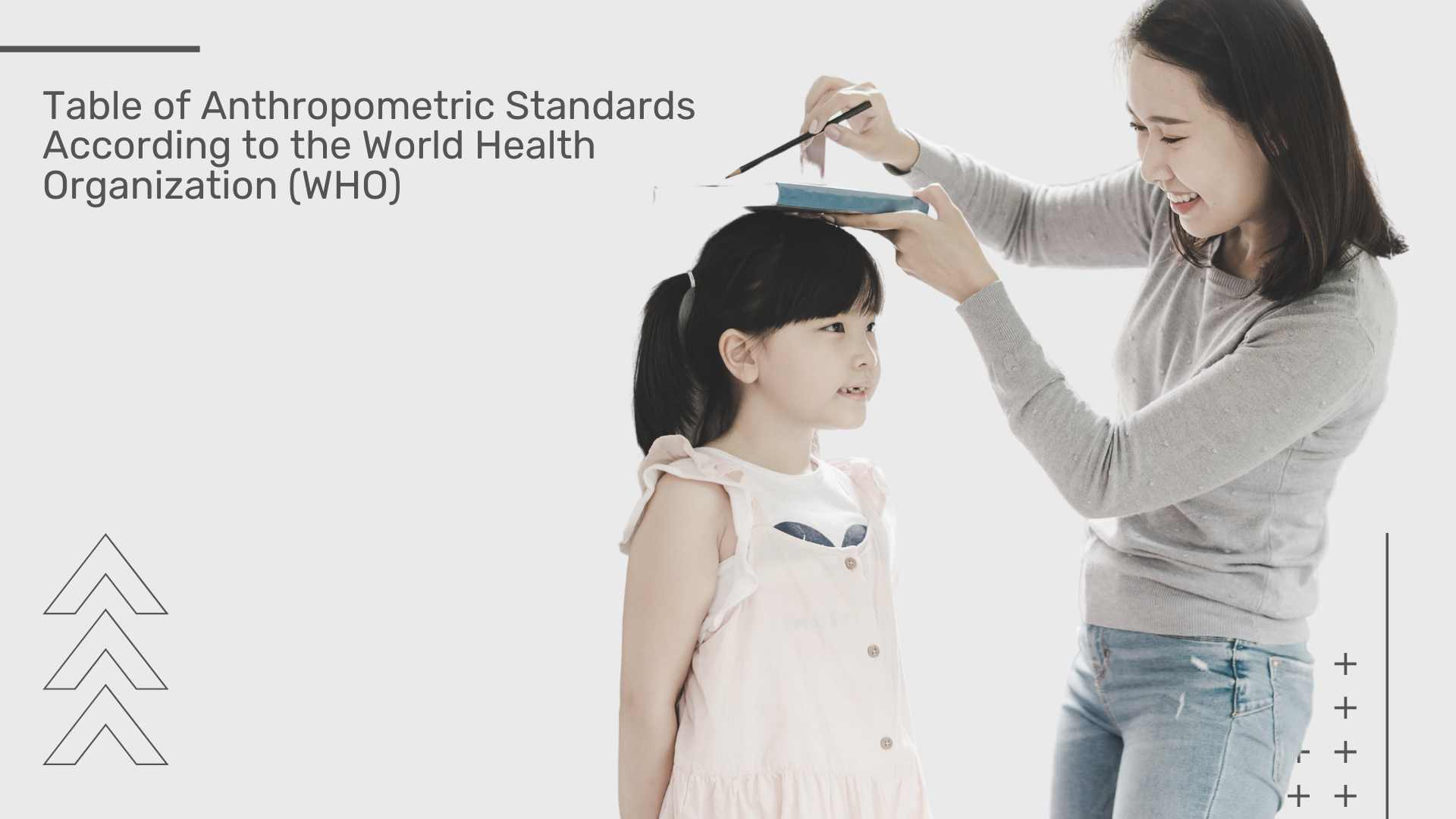Anthropometric measurements or body dimensions for stunting must be accurate, because the measurement data will be used as a benchmark for stunting indications. The collection of anthropometric data is not arbitrary. There are a number of provisions that must be met, one of which is based on the table of child nutritional status according to WHO.
WHO or the World Health Organization itself is a world health organization operating under the auspices of the United Nations. As the largest health agency in the world, WHO has binding rules for collecting data for the detection of stunting cases in children. These rules will then become guidelines for making measurements throughout the world, including Indonesia.

Although, measurement standards in Indonesia also have their own provisions in determining body mass index. Body Mass Index is seen based on the Z score of TB/U and PB/U to determine whether the child’s anthropometric growth is increasing or stagnant.
Overview of WHO
The World Health Organization or the World Health Organization was first established on April 7, 1948 with an office base in Geneva, Switzerland. WHO has 6 regional offices and 150 field offices around the world. As the largest health agency in the world, it is WHO’s obligation to disseminate health information, including matters relating to stunting.
WHO has provisions and standards that can be used as a reference in determining standards for children who can be said to be stunted. Information related to stunting itself is explained in detail in an upload on the official WHO website with the title “Stunting in a Nutshell”. In the content written in 2015, it was explained that stunting is a growth and development disorder experienced by children. The causes themselves include poor nutrition, recurrent infections, and inadequate psychosocial stimulation.
Anthropometric Measurement Standards According to WHO
Children are said to be stunted if their height (including anthropometry) for their age is more than two standard deviations below the WHO Child Growth Standards median. Anthropometry itself is a measure of the dimensions of the human body.
Stunting in early life – especially in the first 1000 days from conception to two years of age – impaired growth has detrimental functional consequences for children. Some of these consequences include poor cognition and educational performance, low adult wages, lost productivity and, when accompanied by excessive childhood weight gain, an increased risk of chronic nutrition-related diseases in adulthood.

Linear growth in early childhood is a strong marker of healthy growth given its association with risk of morbidity and mortality, later non-communicable diseases, and learning capacity and productivity. It is also closely related to children’s development in several domains, including cognitive, language and sensory-motor abilities.
WHO Anthropometric Table
To regulate child anthropometric measurement standards, WHO has released a table of children’s nutritional status based on age and weight. It should be noted that anthropometry or body dimensions include height and weight. The following is an anthropometric standard form of the WHO table based on the child’s weight:

In the table there are a number of columns containing the categories needed in determining the nutritional status of children. Includes age, gender, weight of malnourished children, undernourished children, well-nourished children and overweight children. The table can be used as a reference in assessing a child’s nutritional status, then after the child’s nutritional status is known, what steps need to be taken?
Handling after the possibility of stunting is detected can be in the form of intervention at a health facility, or by adjusting the nutritional intake that is consumed by the baby. This next step can be discussed by mothers and fathers with Posyandu cadres, or authorized Puskesmas officers.
Of course, follow-up steps will greatly affect the child’s condition in the future, this step can even prevent stunting children. Therefore, the nutritional detection process must use accurate anthropometric measuring devices. The following are recommendations for the most accurate anthropometric measurement tools for early detection of stunting from the Solo Abadi team:
The Most Accurate Anthropometric Measurement Tool for Early Detection of Stunting
Anthropometry Kit – SK 17 produced by PT Solo Abadi Indonesia is a package of anthropometric measuring tools to detect stunting from toddler age. This package consists of a Portable Stadiometer, Infantometer Board, Digital Adult Scales, Digital Baby Scales, LILA Tape and also an Anthropometry Bag. The specifications for the Anthropometric Kit – SK 17 have been adjusted to KMK HK 01.07/MENKES/1919/2022 regarding complete specifications for the Anthropometric Kit package. Baby Scales and Digital Adult Scales from Solo Abadi are connected to the MetrisisApp application which can be downloaded on the Google Play Store.

Contact Us to Order Anthropometry Products
Get and order anthropometric measuring instruments at the best prices from Solo Abadi by filling in the available ask for prices. Purchases for agency needs can be purchased directly through the consolidated anthropometric e-katalog window from the Ministry of Health. You can also connect directly via WhatsApp, we are ready to contact you soon.


